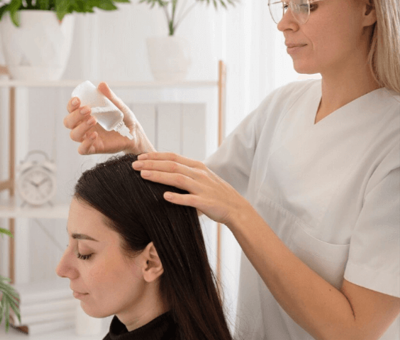Recovery Timeline Explained for International Medical Tourists
Traveling to Korea for a tummy tuck (abdominoplasty) can offer high-quality surgical care, personalized service, and beautiful aesthetic outcomes. But one of the most frequently asked questions from international patients is:
“How long do I need to stay in Korea after my tummy tuck?”
The short answer: at least 14–21 days. But your ideal stay depends on your body, procedure complexity, and how smoothly your recovery progresses.
In this guide, we’ll break down the tummy tuck recovery timeline used by Korean plastic surgery clinics—so you can plan your medical travel confidently.
⏳ Why You Can’t Fly Home Too Soon
A tummy tuck is a major surgery that involves:
- Skin and fat removal
- Muscle tightening (rectus plication)
- Belly button repositioning
- (Sometimes) liposuction or hernia repair
Flying too early increases your risk of:
- Seroma (fluid buildup)
- Infection
- Wound separation
- Deep vein thrombosis (DVT) on long-haul flights
Korean surgeons recommend a gradual return to normal activities, with close monitoring during the first two weeks—especially for international patients who won’t have easy access to follow-up care after returning home.
📅 Recommended Stay: 3-Week Recovery Timeline in Korea
✅ Week 0 (Pre-Surgery)
Days 1–2
- Arrive in Korea
- Meet your surgeon in person for final consultation
- Undergo pre-operative tests (bloodwork, ECG, imaging)
- Rest before surgery day
✅ Week 1: Surgery + Initial Recovery
Days 3–7
- Surgery takes place (usually under general anesthesia)
- Stay in a clinic or recovery facility for daily monitoring
- Drains are inserted to prevent fluid accumulation
- Start gentle walking to prevent blood clots
- Pain managed with oral or IV medications
- First dressing changes begin
- Start wearing a compression garment
💬 “For overseas patients, we require close observation during the first 5–6 days. Drain output, skin color, and wound edges are all monitored daily.”
— Dr. Seo Hyeon-jin, Board-Certified Plastic Surgeon, Seoul
✅ Week 2: Drain Removal + Light Mobility
Days 8–14
- Drain tubes usually removed by Day 7–10
- Compression garment adjusted or replaced
- Begin light stretching and longer walks
- Swelling, bruising, and tightness continue to improve
- Scar treatment (tape, silicone gel) begins
- Optional therapies: red light LED, lymphatic drainage massage
- Attend follow-up appointments with your surgeon
Note: If you are healing slowly or had additional procedures (e.g. liposuction, muscle repair), your doctor may ask you to extend your stay to ensure safety.
✅ Week 3: Final Clearance + Departure
Days 15–21
- Surgeon checks incision healing and scar formation
- Ultrasound or Doppler scan (if needed) to detect hidden fluid
- Receive post-op care instructions and medical report (in English)
- Cleared for long-distance travel (depending on your condition)
- Resume light sightseeing if you feel comfortable
🧳 Most international patients are cleared to fly home between Day 14–21—but only if there are no complications.
🏥 Sample Stay Plan for Medical Tourists in Korea
| Day | Activity |
|---|---|
| Day 1 | Arrive in Seoul, settle into hotel or recovery house |
| Day 2 | In-person consultation, pre-op tests |
| Day 3 | Surgery day |
| Day 4–7 | Clinic recovery, dressing changes, gentle walking |
| Day 8–10 | Drain removal, mobility increases |
| Day 11–14 | Scar treatment begins, compression adjusted |
| Day 15–21 | Final check-up, receive clearance to fly home |
🚨 Why Staying 3 Weeks Is Worth It
Even if you’re eager to return home quickly, here’s why staying longer is safer and smarter:
| Benefit | Explanation |
|---|---|
| Professional wound care | Clinics offer daily or every-other-day dressing changes |
| Prevent seroma | Surgeons monitor drain output and use ultrasound to detect fluid |
| Avoid travel complications | Flying too early increases DVT and infection risks |
| Optimal scar healing | Clinics provide laser or silicone tape to reduce hypertrophic scarring |
| Peace of mind | You’ll return home knowing your healing is on track |
✈️ Can You Fly Home After 10 Days?
Technically yes, if:
- Your surgery was a mini tummy tuck
- You had no complications
- Your drains are out
- You’re medically cleared by your surgeon
But even in these cases, flying before Day 14 is not ideal for full tummy tuck patients.
🏨 Where to Stay During Recovery in Korea?
Options include:
1. Clinic-Affiliated Recovery Houses
- On-site nurses and meals
- Daily wound care
- Medication and IV therapy support
2. Medical Tourism Hotels
- Comfortable beds, elevator access
- Staff trained to assist post-surgery guests
- Some offer in-room medical visits
3. Short-Term Apartments
- Ideal for patients traveling with companions
- Near clinics (Gangnam, Apgujeong, etc.)
Many top Korean clinics provide booking help, transportation, and 24/7 coordinator access to assist foreign patients.
🧘 What Can You Do During Recovery in Korea?
By Week 2, many patients feel well enough to enjoy:
- Hanok village strolls
- Cafés, Korean herbal tea shops
- River walks (like Cheonggyecheon)
- Light shopping (avoid carrying bags)
- K-drama binge sessions in cozy recovery suites!
Avoid:
- Saunas/spas
- Heavy lifting or stairs
- Long walks or subway rides
📝 Final Thoughts: Healing Comes First
A tummy tuck is more than a cosmetic surgery—it’s a reconstructive procedure that requires time, patience, and care.
South Korea is uniquely equipped to support your recovery journey with:
- Exceptional medical quality
- Thoughtful aftercare
- Comfortable healing environments
For best results, plan to stay in Korea for 14–21 days post-op. Your body will thank you, and your surgical results will show it.




